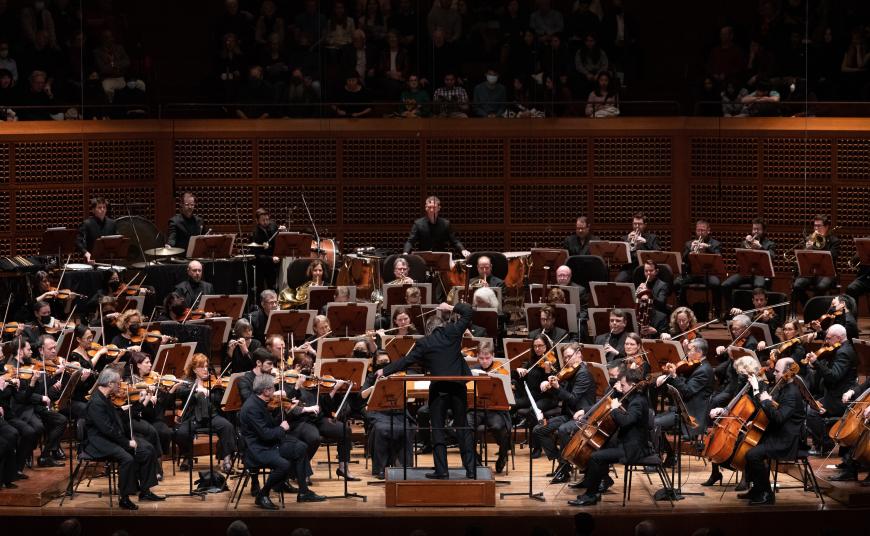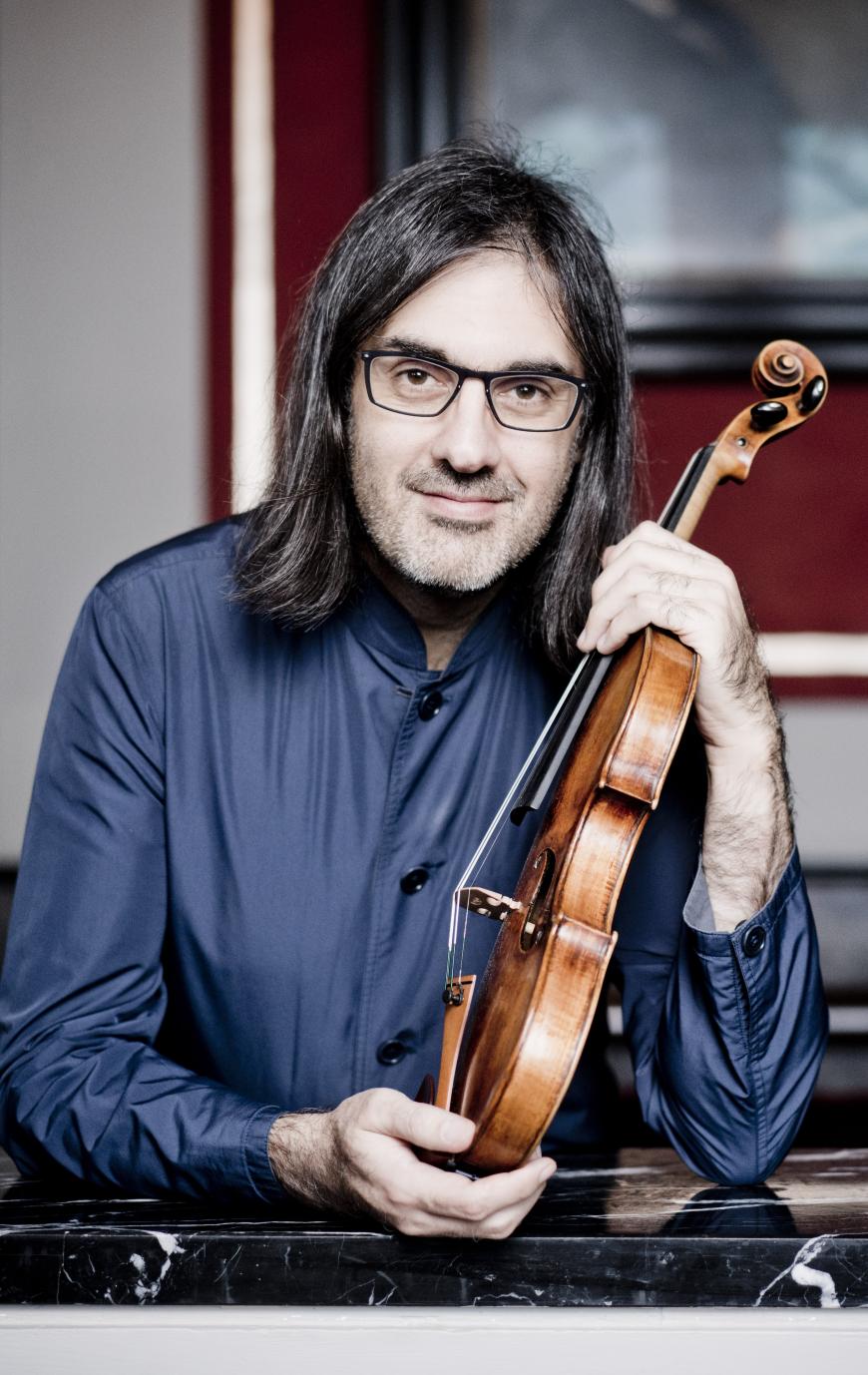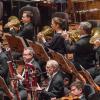
With its programmatic sprawl across a mighty mountainscape scored for an enormous orchestra and assorted special effects, Richard Strauss’s An Alpine Symphony is a veritable catalog of supersized musical abundance. Imposing as it is, the 1915 work shared a San Francisco Symphony bill with two other pieces of ambitious scale Sept. 29 – Oct. 1 at Davies Symphony Hall.
First up on the program conducted by Music Director Esa-Pekka Salonen was the West Coast premiere of Wynton Marsalis’s stylistically broad Herald, Holler and Hallelujah! (2022), spun out by a brass choir and extensively equipped percussion ensemble. In Pyotr Tchaikovsky’s fervent Violin Concerto, the extravagantly gifted Leonidas Kavakos paired formidable technique with adroit phrasing, a supple muscular tone, and interpretive freshness, all of it tightly bound to a splendid performance by the orchestra.
If the Friday evening concert, which included a Bach sarabande encore by the ecstatically received Kavakos, ran long, that seemed only to energize an audience reluctant to let go of the experience. Multiple curtain calls for the concerto and Strauss’s symphony left Salonen looking both humbled and gratified by the acclaim. All in all, it was an evening writ large.

With his first subject, uttered with singing, attentively articulated lyricism, Kavakos laid claim to a concerto that can come off as a flashy, bravura showpiece. Even as the long opening movement set out its minefield of passagework, the soloist found a steady through line while remaining a responsive team player attuned to the orchestra’s melodic and rhythmic drive. Left on his own, in the cadenza, Kavakos mused over rich double stops, eerie harmonics, and dramatic pauses, pushing into new territory that seemed somehow even more Tchaikovsky-like. After a sprint to the finish, the audience erupted and went on so long with its applause that Salonen had to remind everyone, with hand signals, that two more movements were still to come.
Nothing was lovelier or more transporting than the tender exchange between the soloist and woodwinds in the Canzonetta: Andante. The dynamic interplay here was a marvel, from plush to assertive, pensive to an all-but-breathless pianissimo hush. The volcanic Finale built on all that had come before, with Kavakos leaning in now and then with pungent, almost lashing attacks. If some shapeliness got lost in spots, the sheer high-wire excitement of the performance spoke forcefully for itself. A sweet idyll near the end recalled that meditative Canzonetta, a calm gently poised before a swashbuckling finish.
It’s a commonplace that a piece of music takes listeners on a journey. In the case of Strauss’s Alpine Symphony, a trip through space and time is the explicit essence and purpose. In its unbroken flow of road-signed “movements” — “Entry Into the Forest,” “On the Glacier,” and so on — that are more like aurally rendered scenes in a movie, this piece transports an audience across a mountain in a little less than an hour. It’s a kind of cinematic synesthesia, music and conjured imagery intertwined.
The seeming literalness — of bird sounds, a thunderstorm, sunrise, and sunset — may seem too proscriptive for some listeners. But in a positively brilliant performance, Salonen and the orchestra could have swept up even the most resistant skeptic. Across the spectrum, from the furry, deep darkness of the lower strings to the exultant brasses “On the Summit,” the ensemble came through with full-on conviction. The horns offered glowing hymns of praise and determined hunting calls. The woodwinds chirped and cooed, pranced and pondered. The strings glided through the world’s wonderstruck raptures and ominous perils. The percussionists darted from double timpani to cowbells to organ keyboard to add pointed details.
Pictorial as the piece might be, the overall effect was not so much of orchestral color but of light itself — shimmering and dappled, shadowy and mysterious. The result was both enveloping and poignant. By reveling in a natural paradise, An Alpine Symphony can’t help but remind a 21st-century climate change-conscious audience how fragile and threatened such a vision is.
Master trumpeter Marsalis crammed a lot into his five-minute curtain-raiser. There was some percolating jazz, of course, complete with a drum kit, as well as melodies reminiscent of Aaron Copland and George Gershwin, R&B, and big band. Seductive as some of it was, Herald, Holler and Hallelujah! felt scattered and episodic, without a spine or direction to hold the piece together. The musicians, as they did all night, delivered the goods.




